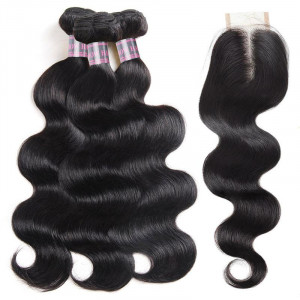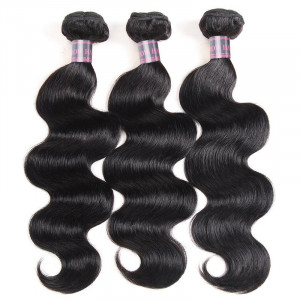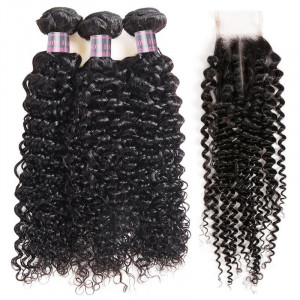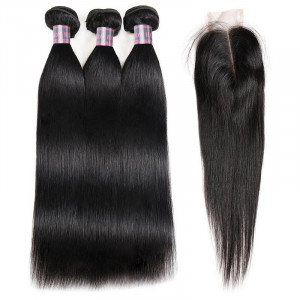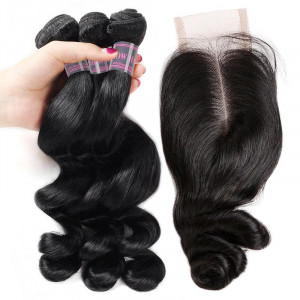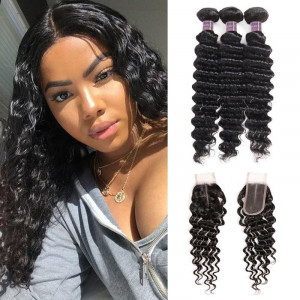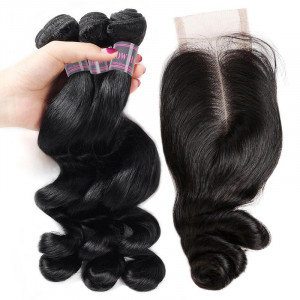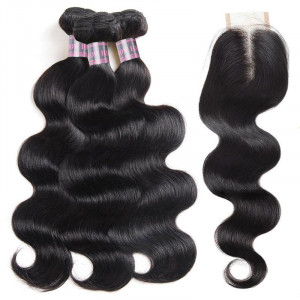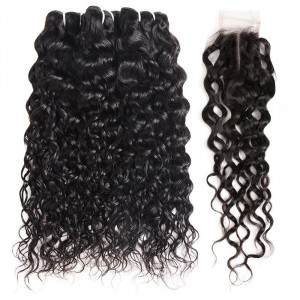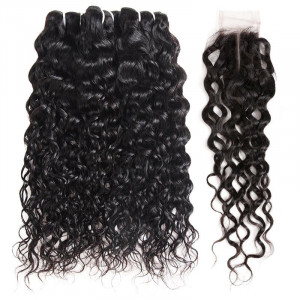How Many Hair Bundles Make a Perfect Wig?
Over time, women's hair has become increasingly important because it is essential to their beauty. A person's attire and haircut are important initial impressions when meeting someone. Many wig lovers may have questions when looking for hair bundles to make a lace frontal or closure wig. They may wonder how many bundles to buy or how to make the lace frontal or closure look better.
Since it depends on individual preferences, there is no precise solution. The main elements that determine how many hair bundles you'll need to create the ideal wig will be covered in this blog.
What factors affect hair bundle quantities?
Above all, how full you want the wig to be will determine how many bundles you need. It is an issue of preference.
Still, quantifiable criteria influence the quantity of hair bundles required for wig construction. At the top is the length of hair you wish to have. Which would you prefer—longer or shorter extensions?
You'll need fewer hair bundles for shorter hairstyles, and for longer hairstyles, more. The image below illustrates how to measure the natural length of your straight or wavy hair wigs and the quantity of bundles required.
The image shows that you should measure the length of a straight-hair wig from the base of the head to the most extended hair. However, a wavy hair wig must be stretched until it is straight to be measured.
The texture of the hair must also be considered when determining the number of bundles needed to make a wig. It is evident that the densities of human hair, which are straight and curly, differ. Curly hair is inherently fuller; you might require fewer bundles. You can use fewer bundles on Kinky Curly hair because the hair density will naturally increase.
We suggest three bundles for a naturally complete look. You would need more bundles if you wear straight human hair to achieve a complete look. Even though Kinky straight hair is full from root to tip, you may need more bundles to complete your appearance. We advise 3–4 bundles, depending on the length.
Wig density is another element that could impact the hair bundles. There are three different wig density levels: 150% (medium hair density), 180% (heavy hair density), and 230% (very heavy hair density). Wig wearers are all aware of this.
150% wig density gives off a whole, natural-looking appearance. Customers often ask for a wig density of 180%.
This is because it gives a fuller look and feels slightly heavier. This makes it perfect for the winter season. Because additional high-density wigs embrace many styling options, wig influencers and artists who can style their hair uniquely and sensitively frequently opt for wig densities of 230%.
Generally speaking, you'll need three hair bundles to create a wig with a density of less than 180%. You'll need three or four hair bundles to achieve a denser and fuller wig for wigs with a density of 180 or above.
How many hair bundles for lace closure wigs?
A lace closure piece is usually 4 by 4 inches and is inserted in the center of the head or on the side for a side part. It is a good option for novices because of its easier upkeep and more reasonable pricing. Additionally, you may maintain and wear the style whenever you choose because it is simple to wear and take off daily.
Any hairdo will require a minimum of two bundles of closure. Individuals selecting lengths beyond 20 inches should consider a minimum of three to four bundles.
You must choose the quantity of bundles needed to get the desired natural hairdo based on the hair type. YMY Hair's lace closure, made entirely of virgin human hair, is simple to install, needs little upkeep, looks natural, and is comfortable to wear.
How many hair bundles for lace frontal wigs?
A lace frontal typically measures 13 by 4 inches. The lace simulates the appearance of a natural hairline, giving the appearance of a more realistic and natural haircut. It is intended to cover the entire area from ear to ear.
If the hair is between 14 and 18 inches long, 3 bundles should work well. Similarly, if the hair is between 20 and 26 inches long, you will need 4 bundles. For example, buy bundles of 14 inches, 16 inches, and 18 inches if you have a frontal, and 18 inches is the recommended length. The optimum method for choosing bundles for a frontal sew-in will be as follows.
Closure vs Frontal
1. There is minimal upkeep required for lace closures
Taking care of and maintaining a lace closure hairpiece takes a little experience, unlike sew-in lace frontal wigs. All you have to do with lace closure extensions is wash, condition, and style.
2. Longer-lasting lace closures
If you choose a sew-in or lace closure wig, they usually last longer than a frontal when taken care of properly. Lace closures are ideal for heated styling because they don't need to be sewn like sew-in lace frontal wigs.
This makes them a convenient option for those who want a versatile and easy-to-use hair accessory. With lace closures, you can achieve a natural and seamless look without the hassle of sewing. Overall, lace closures are a great choice for anyone looking for a low-maintenance and stylish hair solution.
3. Lace frontals come in a variety of styles.
One of the main advantages of wearing a lace frontal hairpiece is the ability to DIY wigs or extensions in whatever style you choose, from ponytails to middle or side parts.
4. Lace frontals let air circulate through your hair.
During hot weather, many of us are familiar with the discomfort of wearing wigs or sewn-in extensions. In addition to being comfortable, lace frontals provide your scalp and hair with continuous airflow.
We advise that you have an additional hair bundle ready in an emergency, regardless of the typical circumstances. You will likely find it helpful in the future.
Use three bundles or more for a frontal or sew-in closure to get your hair's most natural look and density. In the meantime, your preferred hairstyle and texture will also impact the quantity of hair bundles. At most, a more delicate or thin haircut should be purchased at three hair bundles.
13*6%20(1)-1841x1841.jpg)

